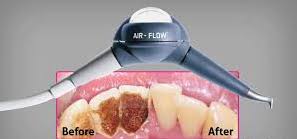General Dentistry – Annual check-up & Scaling
Opening hours
- Mon-Fri 08:30AM – 08:00PM
Sat Closed
Sun Closed
Practical Information
Contact
General Dentistry
General dentists provide services related to the general maintenance of oral hygiene and dental health
- Annual check-up and descaling
- Dental radiography
- The cavity
- Dental devitalization
- Other causes of dental pain
Annual check-up and descaling
It is strongly recommended to have your oral condition and gums checked at least once a year.
Some patients with more risk factors for their teeth and gums should be checked several times a year, according to the recommendations of their dentist.
The annual check-up will consist of a dental and gum check-up, and comparing it to the last check-up to see if there have been any changes or deterioration. Therefore,in one year, it is rare that a dental or gum problem has deteriorated significantly, and it is therefore taken care of in time in the simplest and least invasive way possible.
In order to see if an oral situation has changed in one year, it is best to perform a panoramic radiography every year (depending on the age of the patient and the care he has already received) which will allow to to compare the one realized with the one of the previous year, and to see in a more direct and reliable way if a tooth has been damaged or if the gum or bone has shrunk. It will also allow you to check your old restorations (fillings, composites, inlays/onlays, crowns, implants) and to make sure that they are still waterproof and in good condition. This X-ray will also allow us to check the position and the thrust of the wisdom teeth, and to make sure that they do not damage, under the gum, the teeth next to them if the wisdom teeth do not have enough room to come out.

To complete the radiographic assessment, the dentist performs an assessment of the teeth and mouth using a probe and a mouth mirror to check for problems not visible on the X-ray.

The hygiene of the gums is also checked; if tartar is present, the dentist will perform a scaling and will invite the patient to modify certain dental hygiene methods if necessary (electric brushing? dental floss or interdental brushes? Tooth brushing movement?).
Immediately after the scaling, the dentist performs dental polishing with a mechanical brush and a polishing paste.

Air polishing using a cleaning powder propelled with water on the teeth may sometimes be necessary to complete the cleaning and polishing in certain inter-dental or sub-gingival areas that are difficult to access.


Most often, scaling is performed once a year, but some patients, due to saliva quality or tartar-promoting factors, may have a more rapid creation of tartar and require two to three scaling procedures per year.
In some cases, tartar can be located in subgingival areas and cause small periodontal pockets (reservoirs of bacteria between the gum and the tooth root) that are not accessible during brushing by the patient. At the same time as the scaling, the dentist will proceed to subgingival sanitation by localized root planing of these areas so that the tartar does not develop further under the gum.


